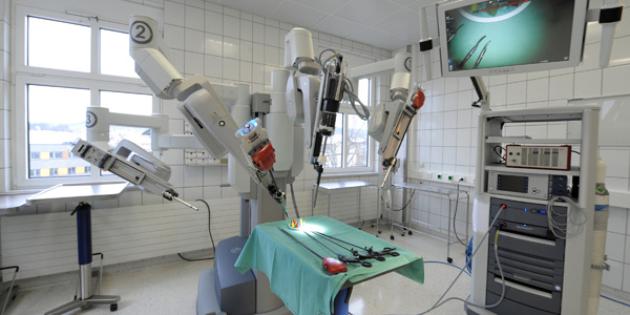Introduction: In the modern world, technological advancements have led to remarkable breakthroughs in healthcare devices, offering innovative solutions to the challenges faced in the medical field. This article explores the significance of these technological marvels, with the aim of shedding light on their transformative impact on healthcare. This article will provide a comprehensive overview of the state-of-the-art in healthcare technology, covering advanced diagnostic methods, surgical innovations, patient care and monitoring, the integration of artificial intelligence and big data, and the potential future developments in the field.
Section 1: Advanced Diagnostic Methods
1.1 Modern Imaging Techniques: The Role of MRI and CT Scans Medical imaging has undergone a significant transformation in recent years. This section delves into the applications and advancements in Magnetic Resonance Imaging (MRI) and Computed Tomography (CT) scans. Discuss the increased resolution, reduced radiation exposure, and improved diagnostics capabilities.
1.2 The Advantages of Molecular Diagnostics and Genetic Analysis Explore the world of molecular diagnostics and genetic analysis. Discuss how these technologies enable early disease detection, personalized medicine, and targeted treatments. Highlight case studies showcasing their effectiveness.
1.3 The Evolution of Biosensors for Precise Diagnostics Delve into the field of biosensors and their contributions to precise diagnostics. Explain how biosensors work, their applications in glucose monitoring, and emerging trends like wearable biosensors for continuous health tracking.
Section 2: Innovations in Surgical Devices
2.1 Robotic Surgical Systems and Their Applications Robotic surgery is a game-changer in the medical field. Detail how robotic surgical systems work, their advantages, and provide examples of successful surgeries conducted using this technology. Emphasize the precision and minimally invasive nature of these procedures.
2.2 Utilizing Virtual and Augmented Reality in Surgery Virtual and augmented reality are not just for gaming; they've found their place in the operating room. Describe how surgeons employ these technologies for pre-operative planning, intraoperative guidance, and training. Mention successful surgeries carried out with the aid of AR and VR.
2.3 3D Printing for Custom Implants and Prosthetics Explore the realm of 3D printing in healthcare, focusing on the creation of custom implants and prosthetics. Highlight cases where 3D printing has been used to create patient-specific solutions, such as orthopedic implants, dental prosthetics, and even bio-printed tissues.
Section 3: Patient Care and Monitoring
3.1 Innovations in Vital Sign Monitoring Discuss the latest innovations in monitoring patients' vital signs, from smart wearables to hospital-grade monitoring systems. Explain how these technologies enable better patient care, early intervention, and seamless data sharing with healthcare professionals.
3.2 Medical Devices for Home Healthcare Highlight the role of medical devices that empower patients to manage their health at home. Talk about devices such as home hemodialysis machines, infusion pumps, and telemedicine tools. Explain their benefits in terms of patient comfort and reducing hospital readmissions.
3.3 Telemedicine and Remote Consultation Telemedicine is becoming increasingly prevalent. Dive into the realm of telemedicine, discussing its growth, advantages, and how it bridges geographical gaps in healthcare. Provide real-world examples of successful remote consultations.
Section 4: Application of Artificial Intelligence and Big Data
4.1 The Role of Artificial Intelligence in Healthcare Artificial Intelligence (AI) is revolutionizing healthcare. Explain how AI algorithms can assist in disease diagnosis, drug discovery, and treatment planning. Discuss the ethical concerns and data privacy issues associated with AI in healthcare.
4.2 Predictive Analytics for Accurate Diagnosis and Treatment Detail how predictive analytics, driven by big data, enhances healthcare outcomes. Discuss its applications in disease prediction, resource allocation, and patient risk stratification.
4.3 Ethical and Privacy Concerns in Healthcare Data Usage Examine the ethical dilemmas and privacy concerns surrounding the use of patient data. Highlight the importance of data security and consent, and the need for robust regulatory frameworks.
Section 5: The Future of Technological Marvels in Healthcare
5.1 Emerging Trends in Healthcare Technology Provide insights into the emerging trends in healthcare technology, including nanotechnology, quantum computing, and brain-computer interfaces. Discuss their potential impact on healthcare.
5.2 Personalized Medicine and Individualized Care Explore the concept of personalized medicine and how technological advancements will lead to more individualized care, tailored to a patient's genetic makeup and lifestyle.
5.3 Challenges and Future Prospects Conclude by discussing the challenges and obstacles that lie ahead in adopting these technological marvels at scale. Offer a glimpse of the promising future of healthcare technology and the need for continued innovation.
Conclusion: In conclusion, the rapid evolution of healthcare technology is reshaping the way we diagnose, treat, and care for patients. These technological marvels are not only enhancing the quality of healthcare but also opening doors to new possibilities. As we stand on the cusp of a healthcare revolution, it is essential to remain vigilant about ethical considerations, patient privacy, and equitable access to these advancements. The future of healthcare is indeed exciting, and its trajectory will be guided by the relentless pursuit of innovation and the well-being of patients around the world.
